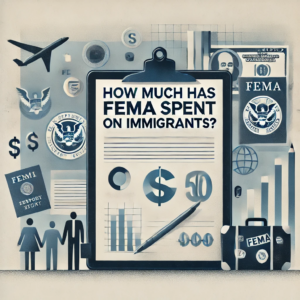
It’s been a tough time for Americans hit by Hurricane Helene, and FEMA’s response has stirred some frustration. Headlines are blowing up, questioning why storm survivors are only getting $700 or $750 per person, while billions are heading to Israel and Ukraine. But there’s more to the story than just the dollar signs. Let’s break it down.
FEMA’s $750 Payment Isn’t the Whole Story
First things first—FEMA isn’t capping relief at $750 per person. That amount is just a one-time payment for immediate emergency needs. Think of it like a quick boost to cover things like hotel stays, gas, or emergency repairs. The real aid comes later, through additional programs for rebuilding, housing, and long-term support. In fact, FEMA announced it has already approved over $18 billion in response to Hurricane Helene. The $750 is a small percentage of the overall budget. People are frustrated, though, because they need more help right now—and it feels like too little too soon.
Timing Makes a Difference
It’s also important to remember the timeline here. The hurricane just hit, and emergency aid takes time to roll out. Comparing the current $750 emergency payment to billions allocated for Ukraine and Israel is apples-to-oranges. The funding for those countries was planned well in advance, while FEMA’s budget will grow as more damage assessments roll in. Congress recently stepped in to secure more FEMA funding, but disaster relief takes time. The frustration from survivors is understandable—they’re dealing with immediate needs. But the full aid package is still unfolding.
Military Aid Isn’t Exactly “Cash”
Another thing often overlooked is that much of the U.S. aid going to Ukraine isn’t money but military equipment. A lot of the weapons being sent to Ukraine were already scheduled for decommissioning. Shipping them overseas is actually cheaper than dismantling them responsibly back home. So, when you hear about billions going to Ukraine, that’s not billions in cash. It’s the value of old tanks, missiles, and ammunition that would’ve otherwise been scrapped. For Israel, similar rules apply—some of the funds are in the form of weapons and security systems, not stacks of dollar bills.
The Bigger Picture: Different Types of Aid
It’s frustrating to see billions earmarked for other countries while Americans wait for more help at home. But international aid and disaster relief are two very different things. The aid to Ukraine and Israel comes from separate budget categories that don’t compete with FEMA funds. Disaster funding is adjusted as needed, based on damage assessments and ongoing needs. This doesn’t mean people shouldn’t hold FEMA accountable—storm victims need more immediate support. But it helps to understand that foreign aid wasn’t taken from FEMA’s budget. Aid packages to Ukraine and Israel were already in motion long before Hurricane Helene hit.
Final Thoughts
The comparison between international aid and FEMA payments stirs strong emotions, but it’s not quite fair. The $750 payments are just a starting point, not the final amount. FEMA’s full response will take time to roll out, and the total relief package is likely to grow. Meanwhile, a lot of the “money” sent to Ukraine and Israel isn’t cash. Much of it is military equipment that was already destined for disposal. Yes, it’s hard to wait for disaster relief when you’re the one suffering. But the aid is coming—just not all at once. In the end, it’s okay to be frustrated and demand faster help. But it’s also worth remembering that comparing disaster aid to military funding is like comparing apples to oranges. Both are important, but they serve very different purposes.






